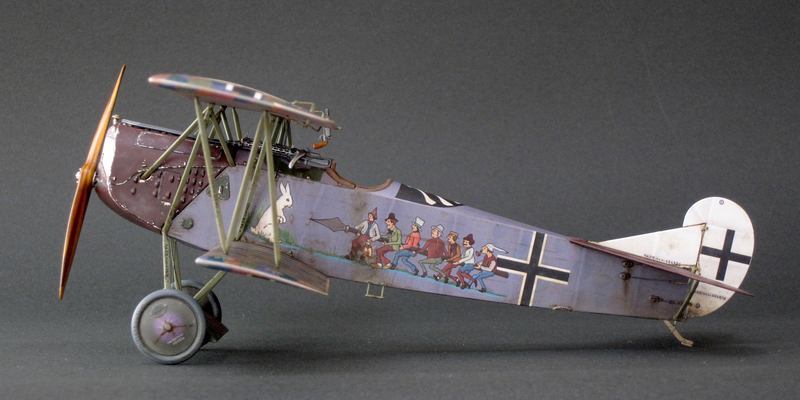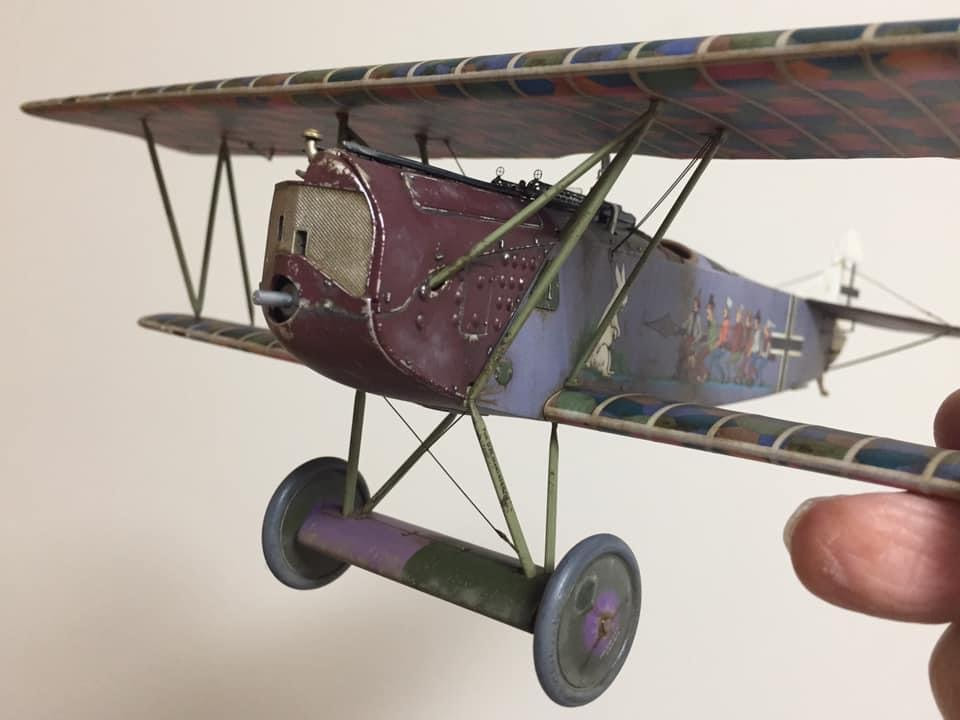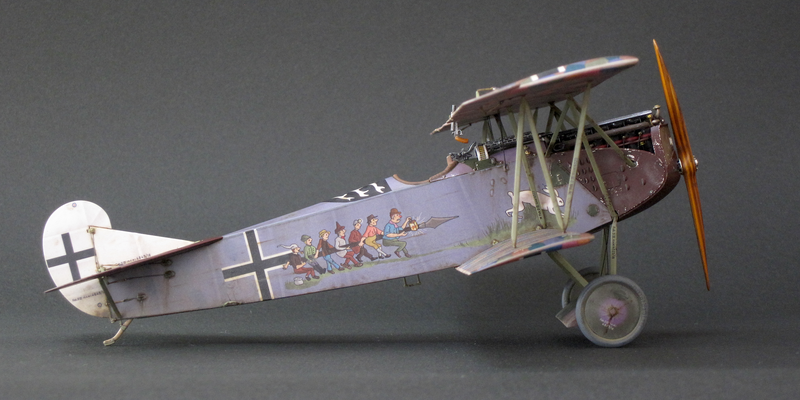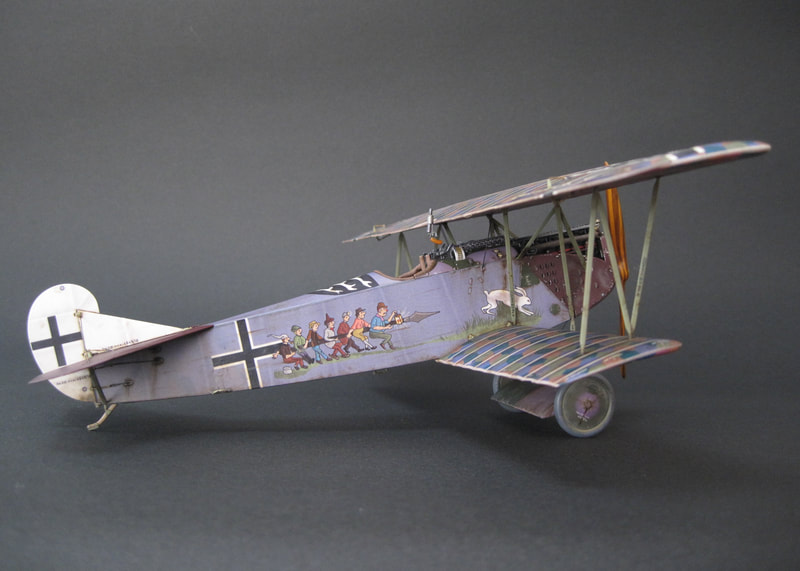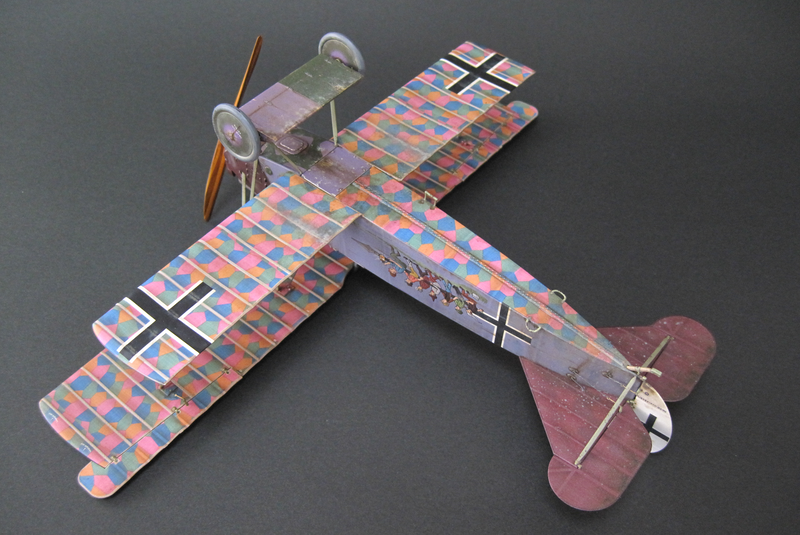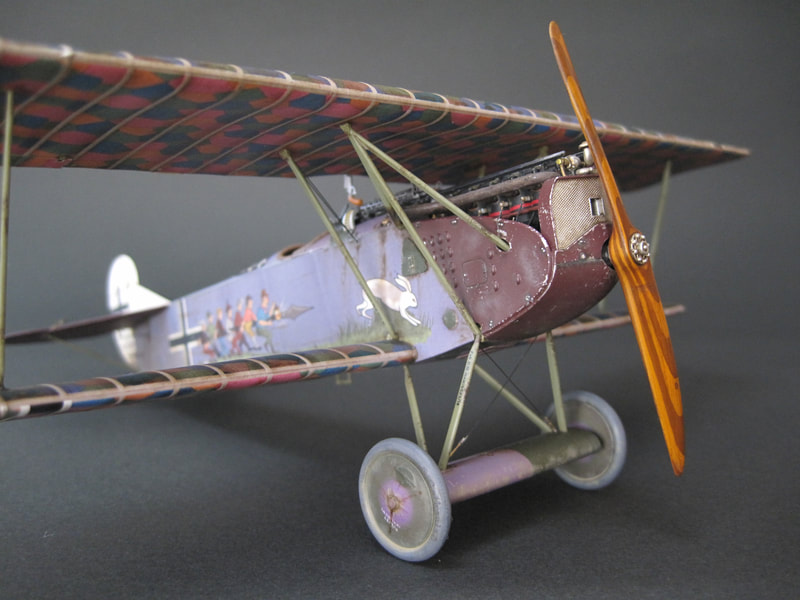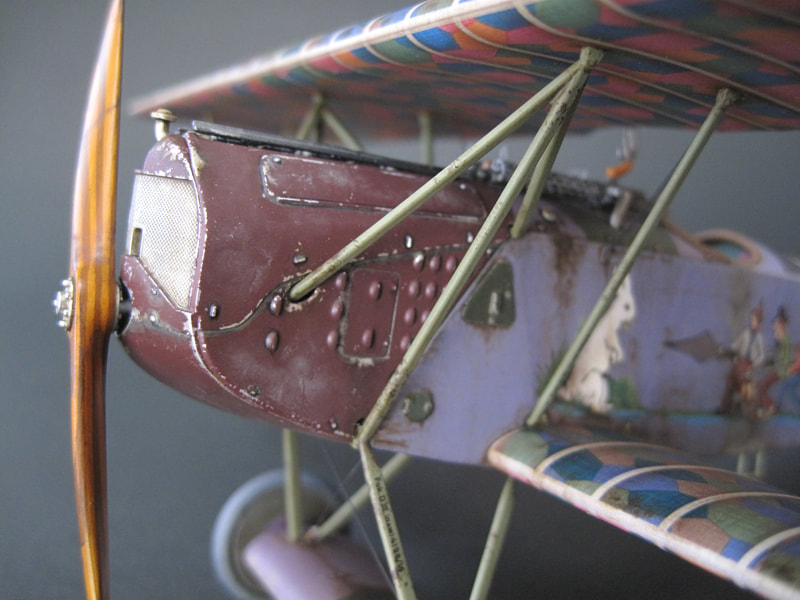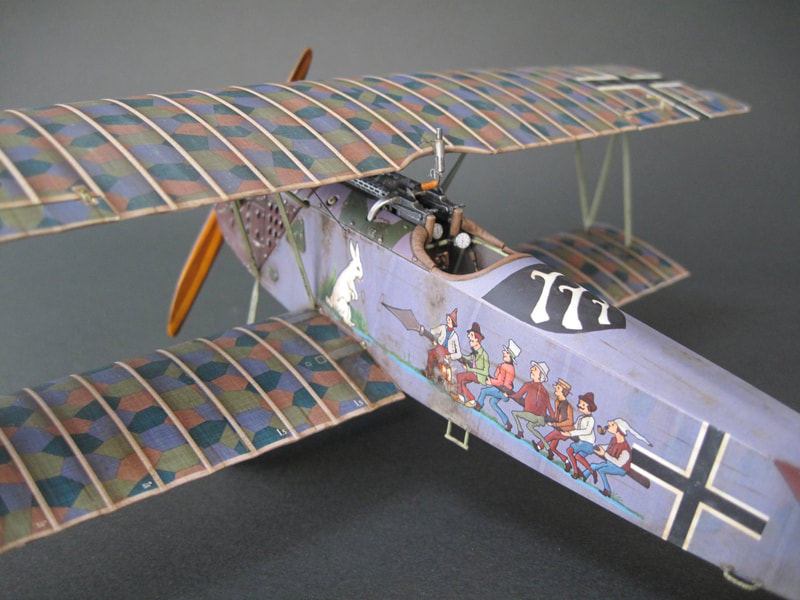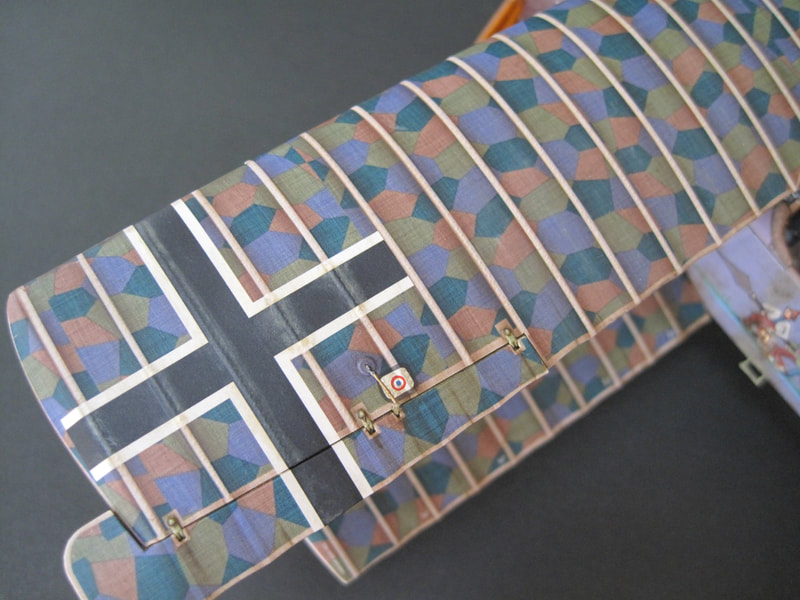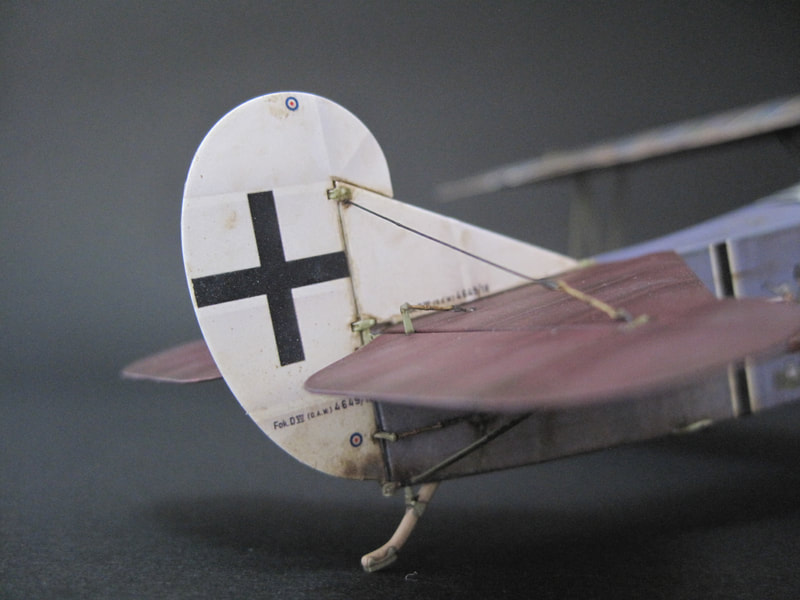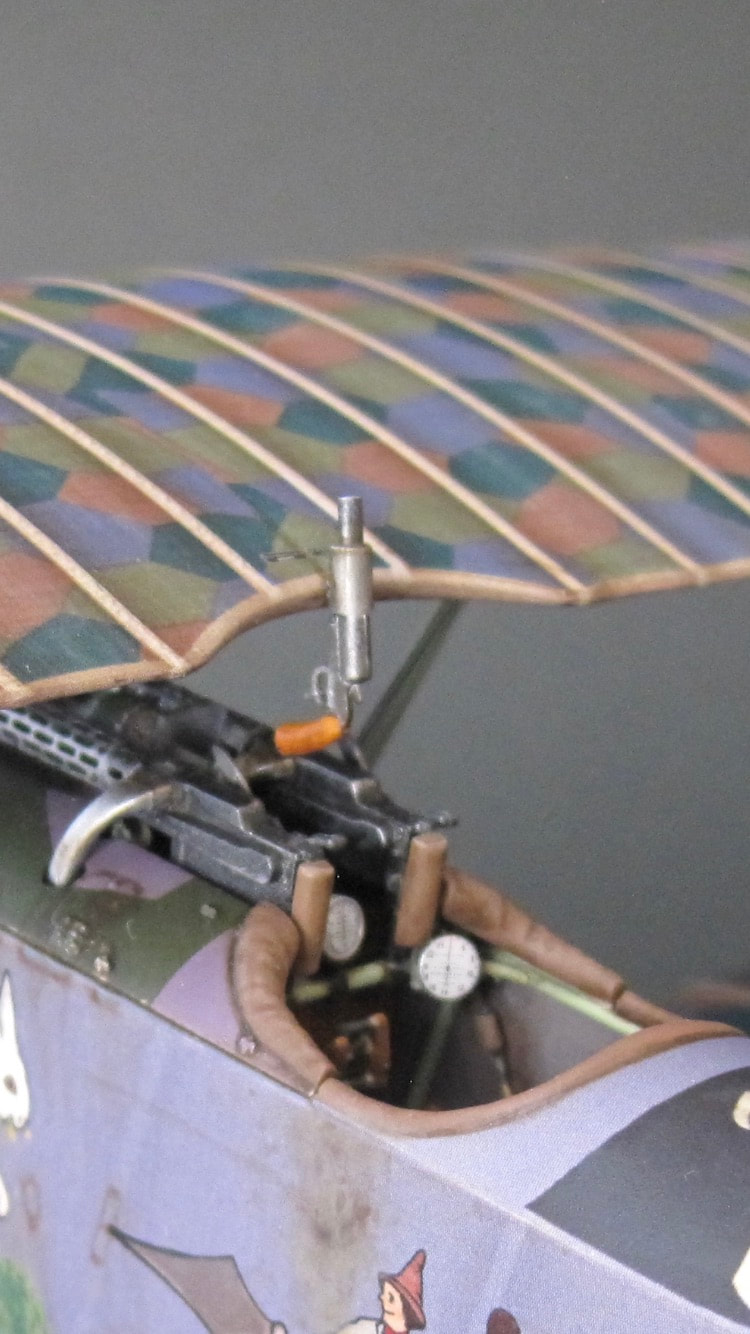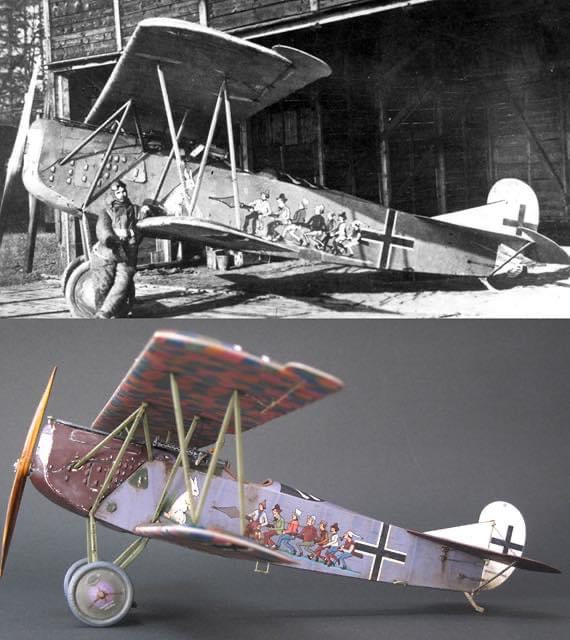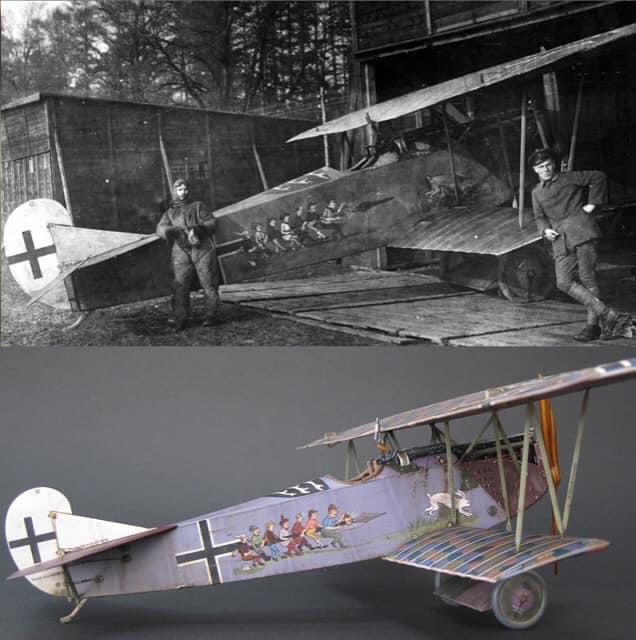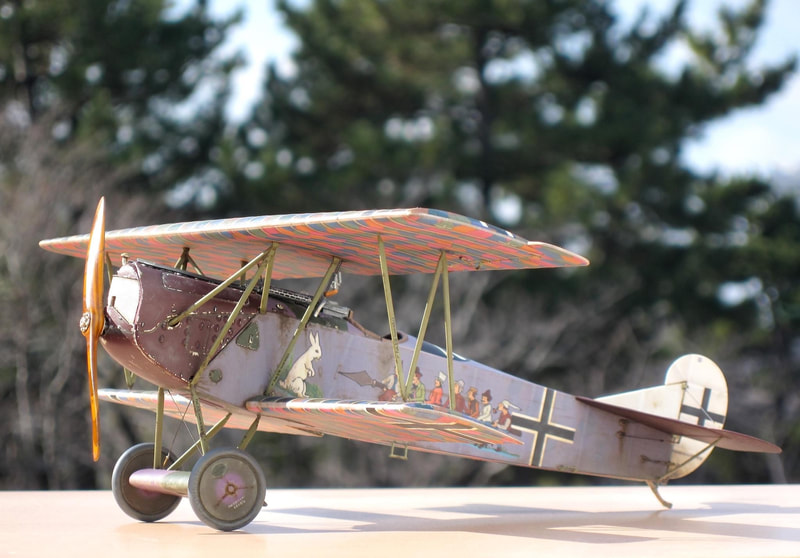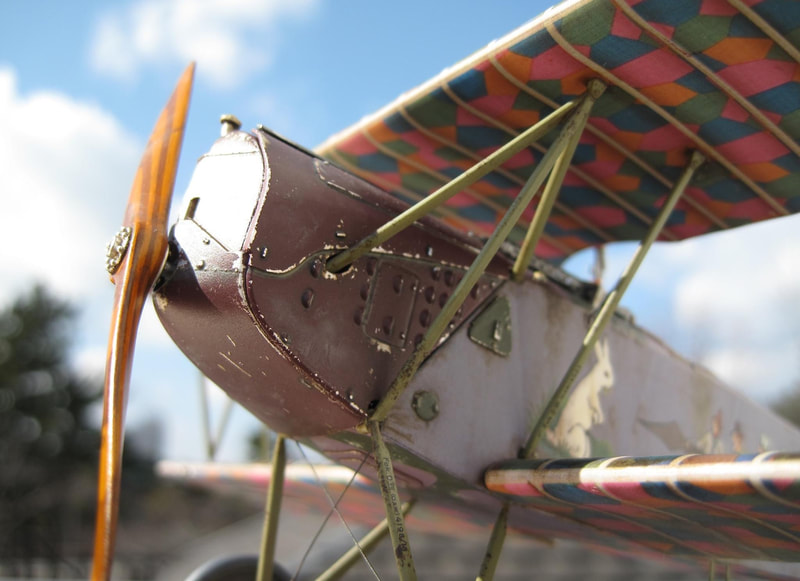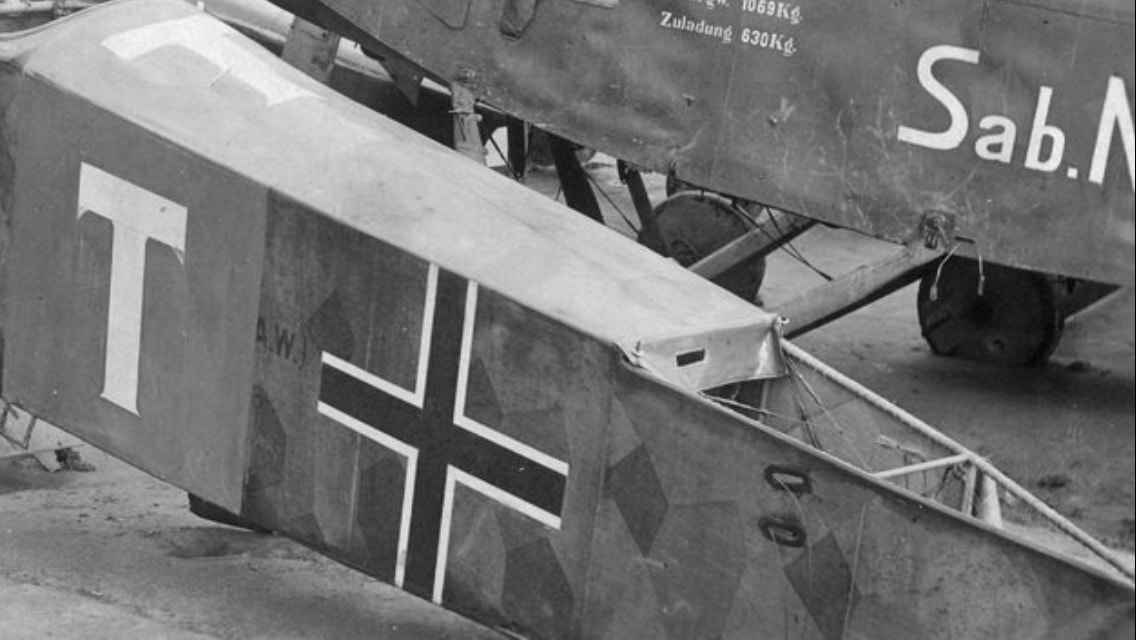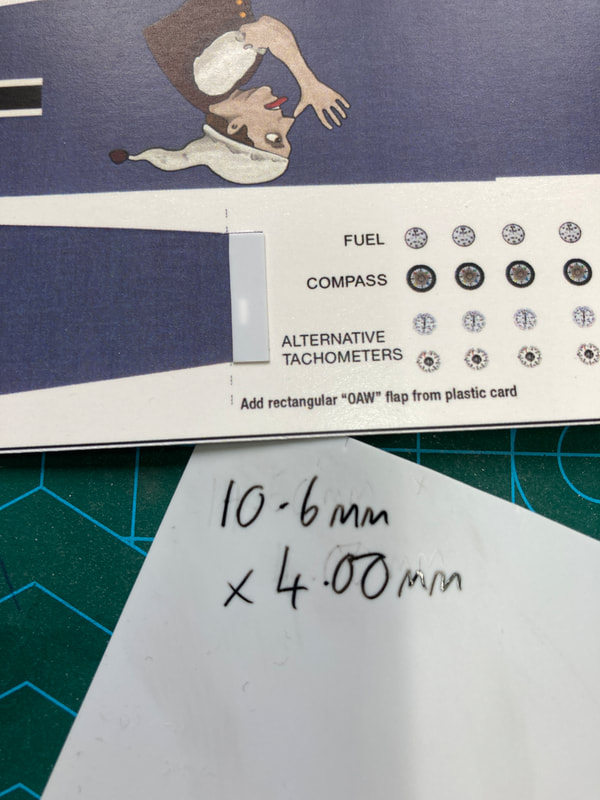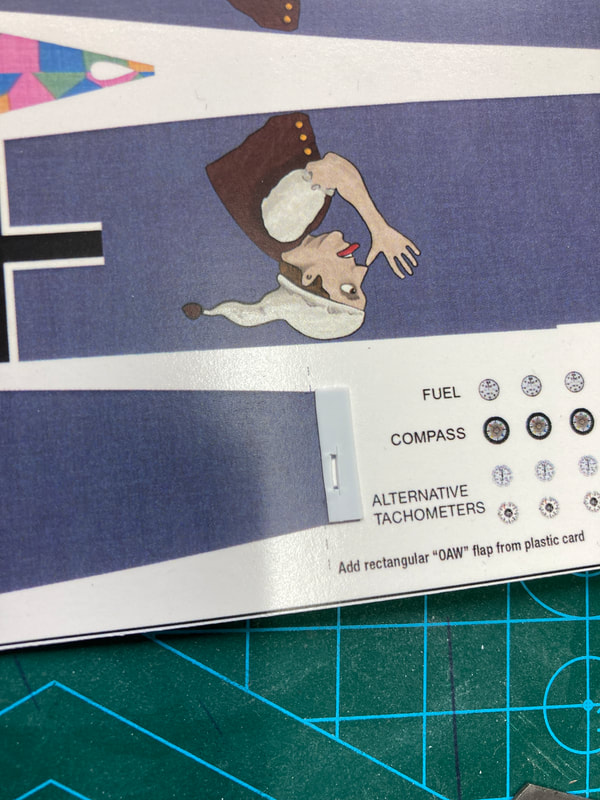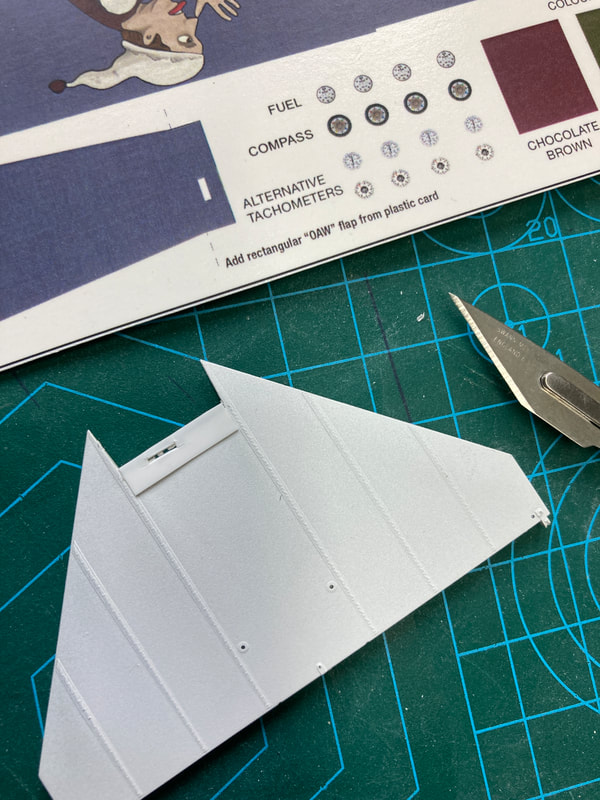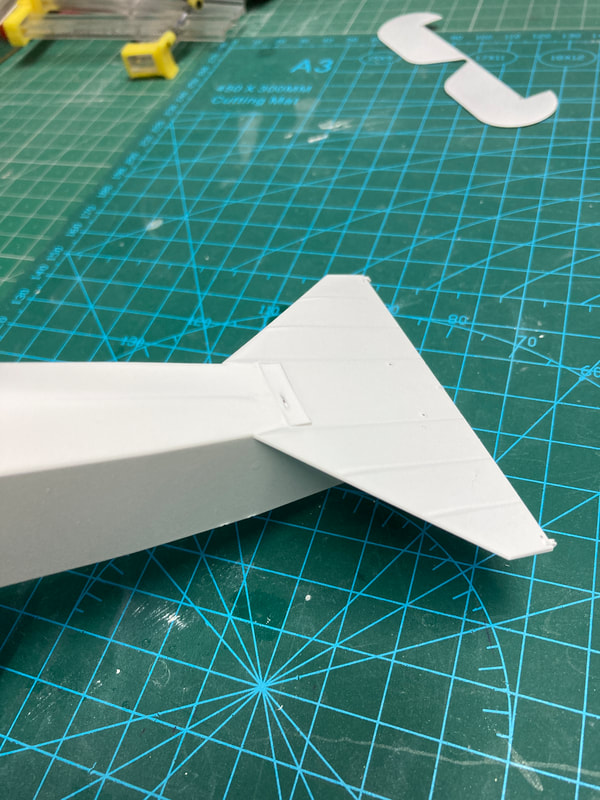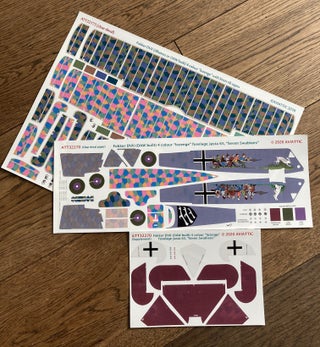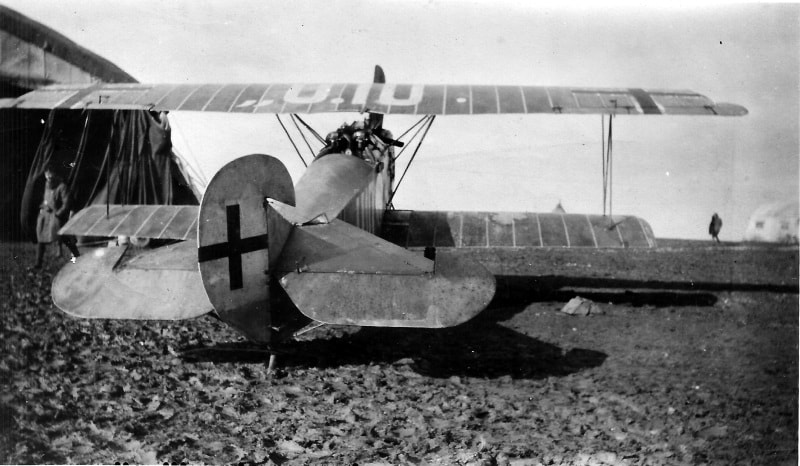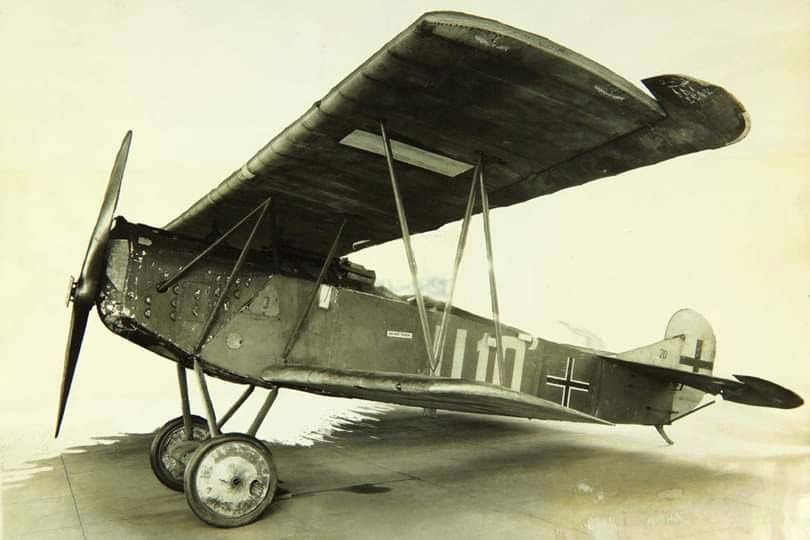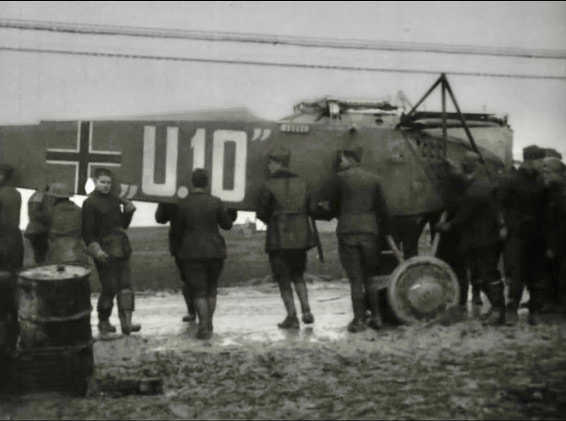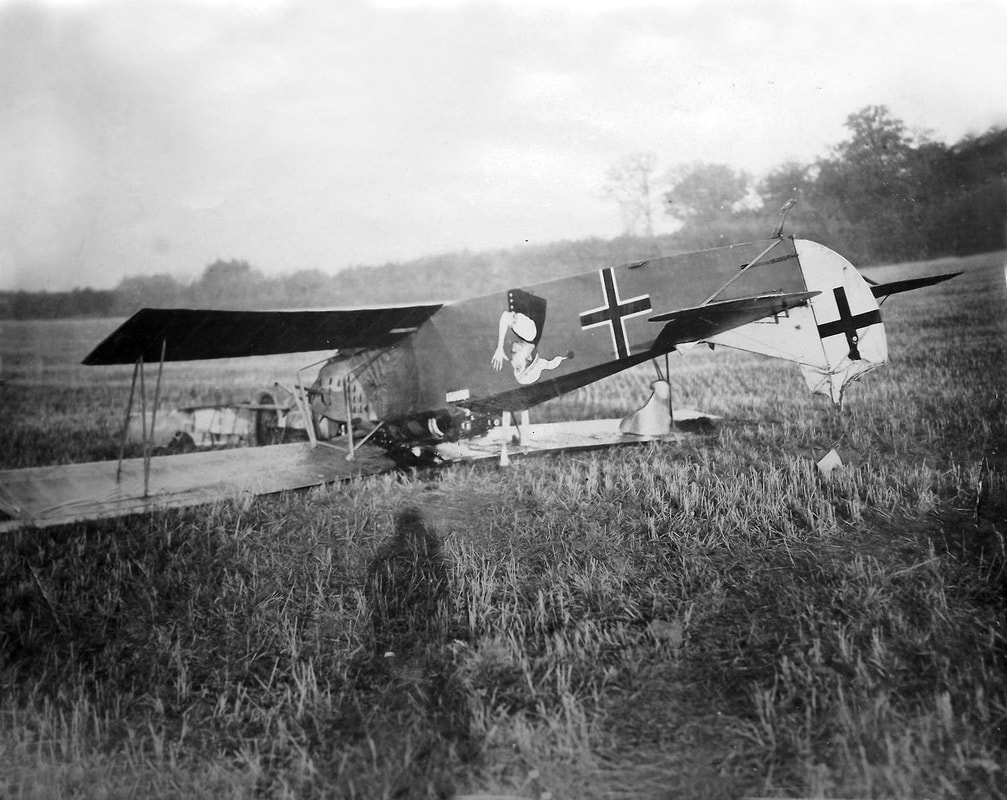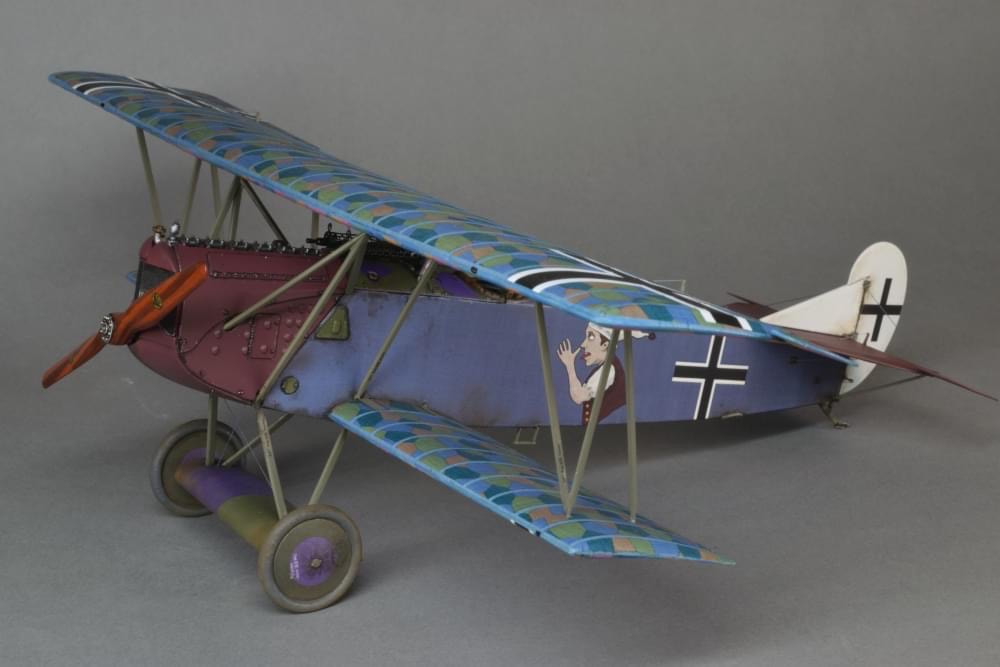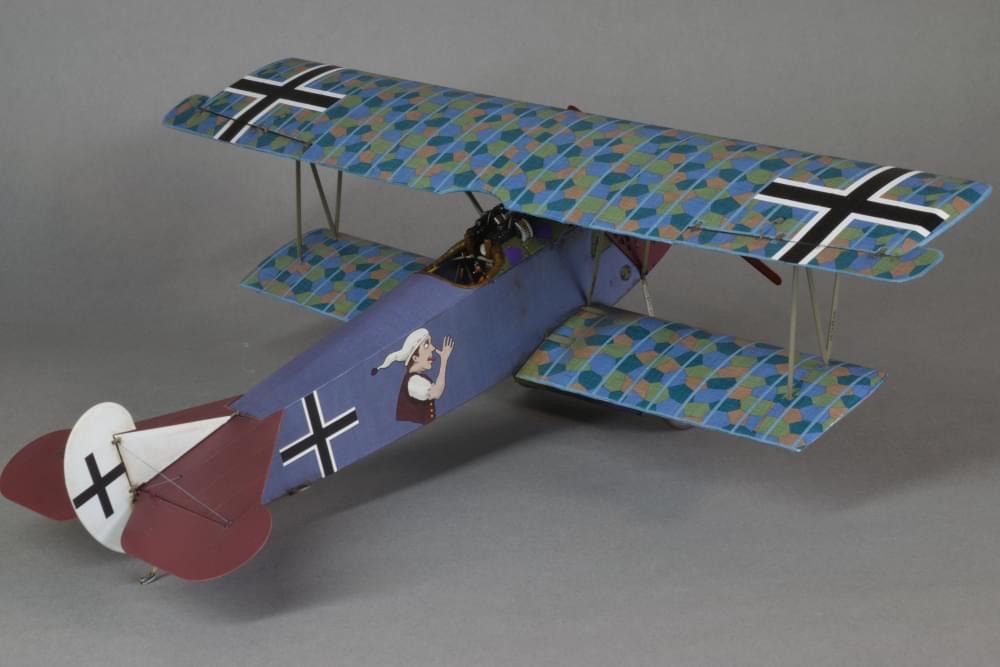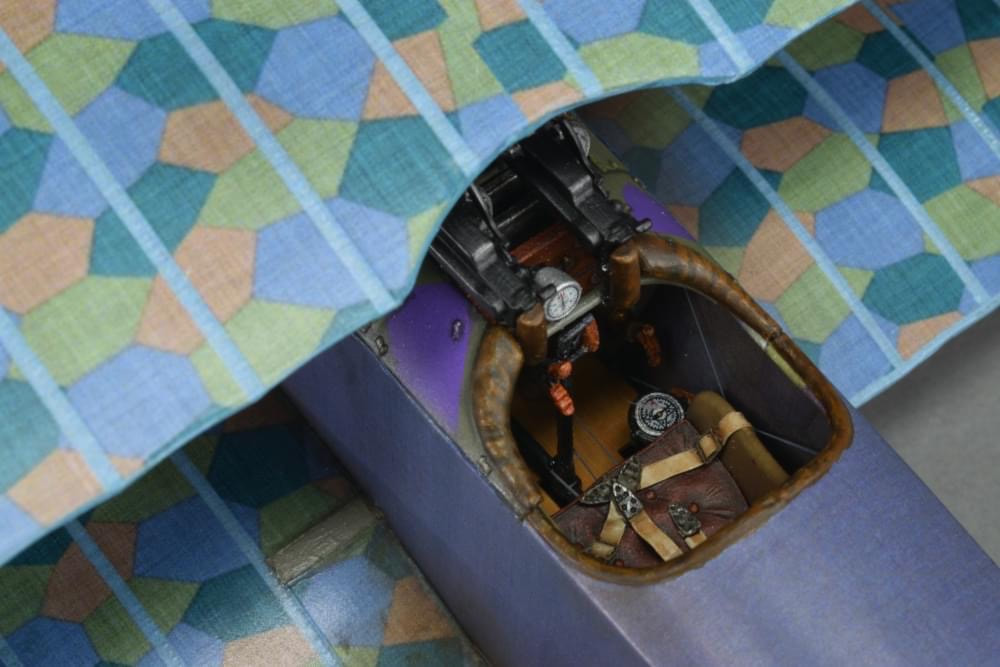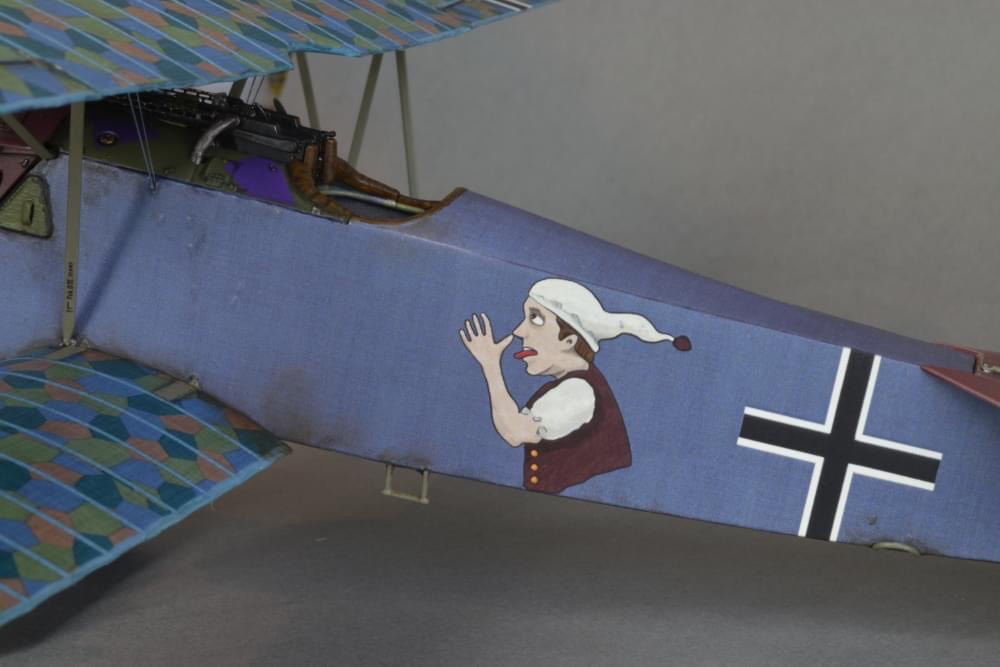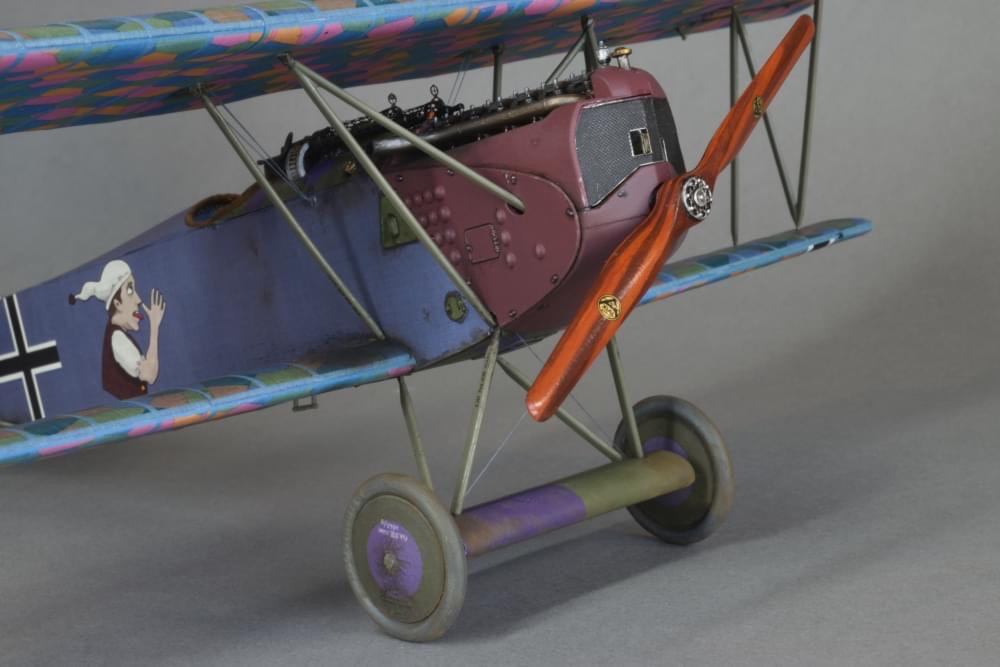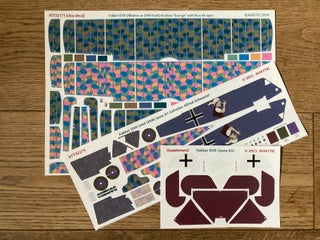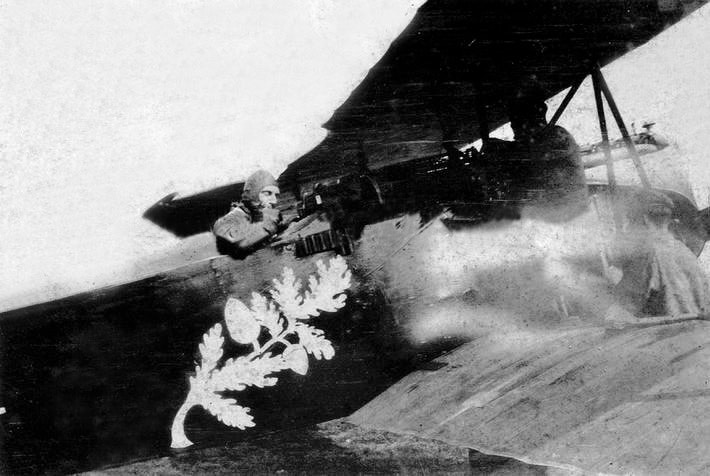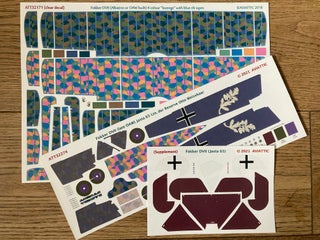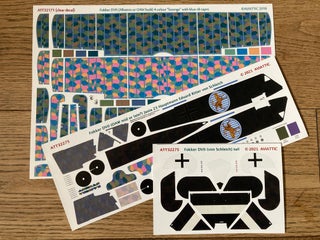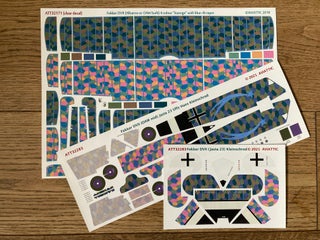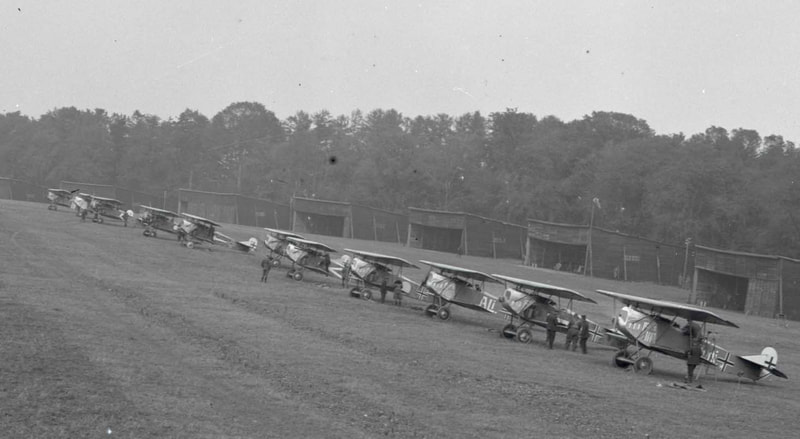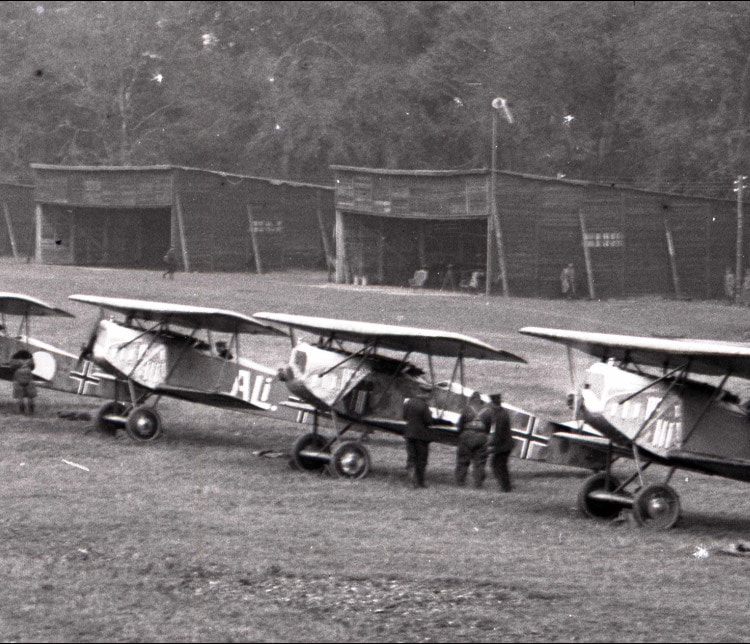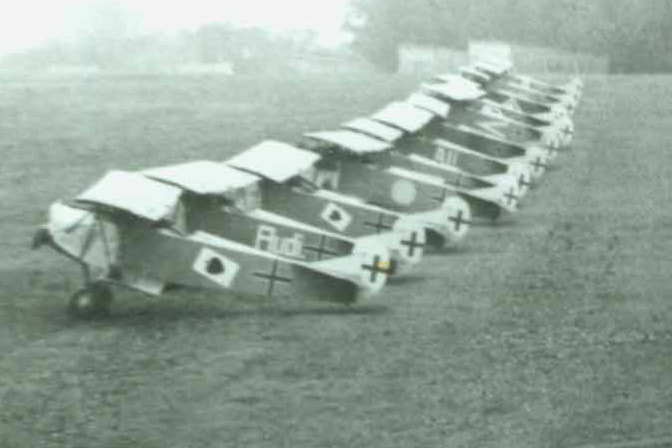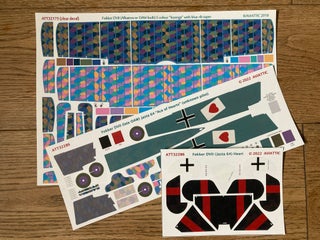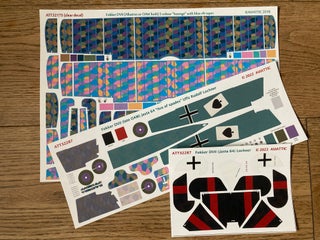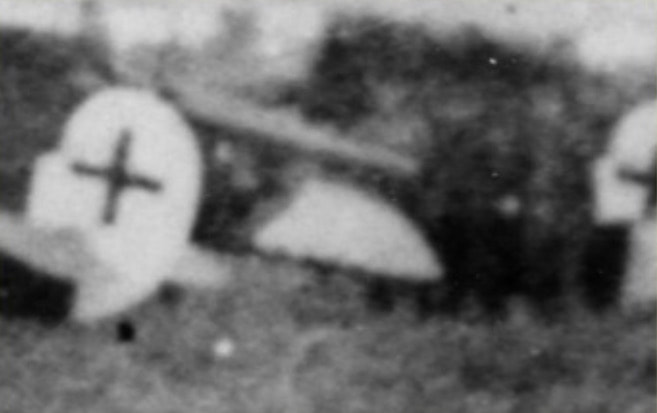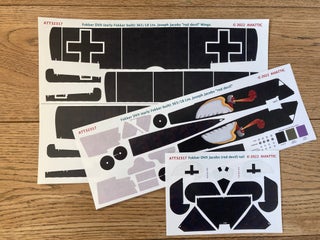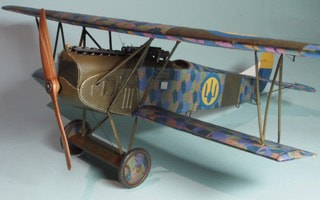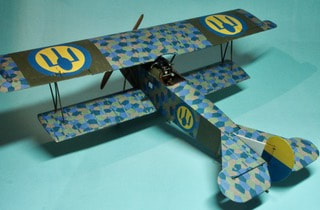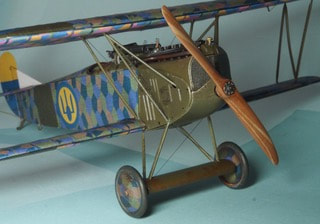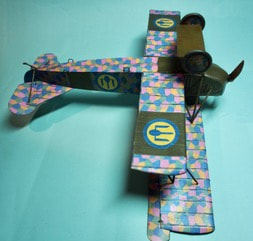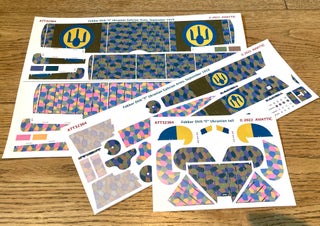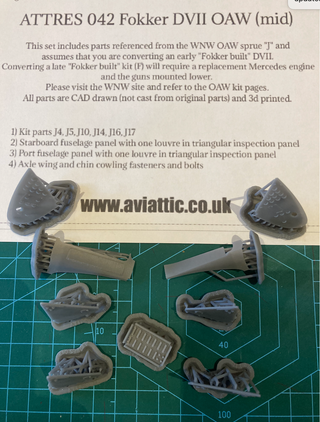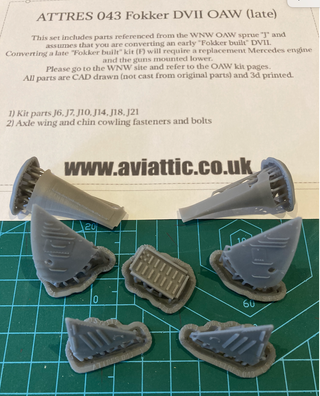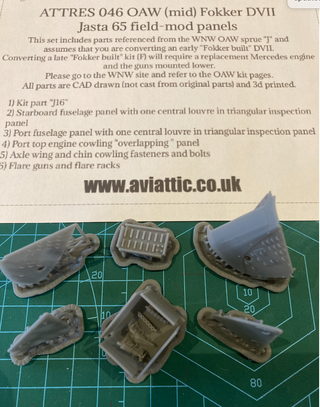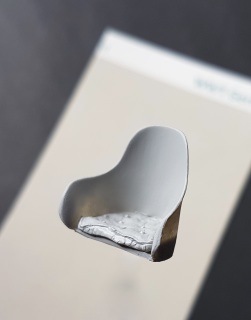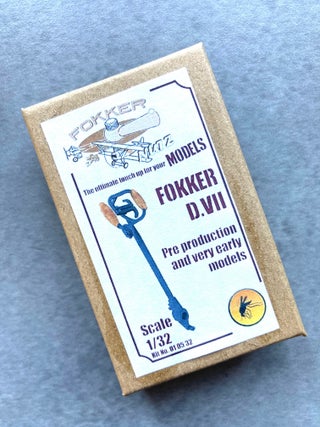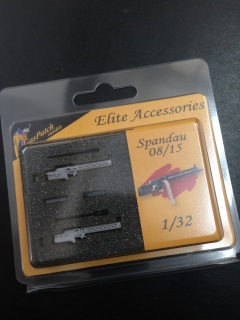NEW!
1/32 Fokker DVII pilot and unit markings for the Wingnut Wings model..
Some newly discovered schemes, some old favourites - stay tuned!
NOTE : Fokker DVII idiosyncrasies, part 1..
Too lengthy a subject to cover here these differences are all well documented by Albatros Production's "Fokker Anthology" trilogy of books and the still-viewable Wingnut Wings website pages, which include downloads of their "essential reading" instruction pamphlets and photo galleries.
OAW built airframes
Here is one such departure from the norm : a "flap" of printed lozenge covering at the tail end of the turtledeck (an extension of the one-piece covering) intended, one imagines, to negate moisture ingress, covering as it does the join between airframe and tail surfaces.
This had a rectangular, re-enforced slot for the adjustable horizontal stabiliser fixing which allowed for adjusting the incidence of the tailplane.
The Aviattic decal sheets hint at this area and the requirement to add a suitable rectangle of thin (gloss white painted) plastic card to this area, after you have decalled the tail's horizontal stabiliser (as usual, all mainframe elements should be decalled before final construction).
ATT32270 Fokker DVII (mid-OAW built) Jasta 65 "Seven Swabians" Ltn. Alfred Bäder
The ever-popular "Seven Swabians" scheme of Ltn. Alfred Bäder of Jasta 65.
The story did not have a happy ending for the villagers of the story and so what the message was behind this choice of marking is unclear.
Colours of the villagers clothing is conjectural but details have been faithfully replicated from the superb photographs featured on the website www.buddecke.de which, sadly, I can't share here.
Three sheet decal set, including fuselage, tail and 4 colour "lozenge" wing set ATT32173 with linen rib tapes.
Match the colour of the tail to paint metal cowlings, with the cowling forward of the cockpit retaining its original OAW lilac and green painted, random lozenge shapes.
Cowlings were often removed by this unit to aid cooling of volatile phosphorous ammunition.
Add resin cowling sets ATTRES 042 or 046 convert any WNW DVII to OAW cowling configuration.
Note : there are other differences in cockpit details, cowlings that comparison of WNW instructions will illuminate.
ATT32271 Fokker DVII (mid-OAW built) Jasta 65 "U10" Ltn. Heinz von Beaulieu-Marconnay
The iconic "U10" scheme of Ltn. Beaulieu-Marconnay of Jasta 65. The "U10" a nod to the horse branding practice of his former cavalry regiment, the 10th Uhlans.
This machine landed on the forward airfield of US Aero 95th Squadron on November 9th 1918, two days before the Armistice and Heinz was captured..
Heinz's brother, the 25 victory ace and Staffelführer of Jasta 19, Oliver had succumbed to his wounds just two weeks earlier and it is thought that rather than "mistakenly" landing on an allied field, Heinz may quite simply have had enough..
There is actually film of the aircraft being salvaged and readied for its journey to the US, where many German aircraft were taken to be studied. Stills from this film allowed us to better copy the markings, rather than trust any details of the rather poor restoration carried out on the airframe and displayed at the National Air & Space Museum.
A three-sheet decal set, including fuselage, tail and 4 colour "lozenge" wing set ATT32173 with linen rib tapes and "U10" legend along with OAW specific "hier anheben" stencils.
The axle wing was painted half lilac (starboard) and green (port).
Match your paints to the swatches on the decal sheet.
Match the "chocolate" colour of the tail to paint metal cowlings, with the top cowling forward of the cockpit retaining its original OAW lilac on green painted lozenge shapes.
Add resin cowling set ATTRES 046 to achieve the correct appearance of this machine in the field. This converts any WNW boxing of the DVII to the correct cowling variant.
Note : there are other differences in cockpit details, cowlings between DVII manufacturers that comparison of WNW instructions will illuminate.
ATT32273 Fokker DVII (mid OAW built) Jasta 65 Gefreiter Alfred Scheutzel
More information on the previously little known unit, Jasta 65, has been recently shared and I am grateful to Greg van Wyngarden for sharing some photos with me that have inspired a number of new decal sets..
This mid-production, OAW-built DVII (serial unknown) met an unhappy end but gives us a clear view of the "rude peasant" thumbing his nose at an adversary!
Set includes generic 4 colour "lozenge" wing decals with blue tapes, as this is my "best guess". If you would prefer pink, natural linen or lozenge tape versions (all of which are possible!) please specify with your order.
Notes : seat outside was not covered in "lozenge" fabric. Replicate natural aluminium.
If you do not have the OAW boxing of the Wingnut Wings kit it can be modelled from the "early" or "Albatros-built" versions, utilising the Aviattic cowling set ATTRES 042.
Refer to the (downloadable) WNW DVII instruction booklet for other OAW-specific modification, using "spare" parts on the kit sprues :
http://www.wingnutwings.com/ww/product?productid=3080
ATT32274 Fokker DVII (late OAW-built) Jasta 65 Ltn. der Reserve Otto Weisshaar
More information on the previously little known unit, Jasta 65, has been recently shared and I am grateful to Greg van Wyngarden for sharing some photos with me that have inspired a number of new decal sets..
This late-production, OAW-built DVII (serial unknown) exhibits a pale, mono-tonal oak branch and flare rack (on its starboard side).
Set includes generic 4 colour "lozenge" wing decals with blue tapes, as this is my "best guess". If you would prefer pink, natural linen or lozenge tape versions (all of which are possible!) please specify with your order.
If you do not have the OAW boxing of the Wingnut Wings kit it can be modelled from the "early" or "Albatros-built" versions, utilising the Aviattic cowling set ATTRES 043.
Refer to the (downloadable) WNW DVII instruction booklet for other OAW-specific modification, using "spare" parts on the kit sprues :
http://www.wingnutwings.com/ww/product?productid=3080
ATT32275 Fokker DVII (OAW-built mid or late) Jasta 23 Oblt. Eduard Ritter von Schleich
Rudolph Stark's post-war recollections mention von Schleich's black-painted DVII and he illustrated it in one of his accomplished paintings after the war.
Both proud Bavarians they led their respective Jasta, 24 and 23 and shared the same aerodrome in the Autumn of 1918.
No known photo's exist of this aircraft and it could have been a machine from the mid to late production runs. Delete the forward part of the fuselage decals (indicated by a dotted line) for the "late" cowling louvre style (ATTRES 043) or, for a mid-production version use set ATTRES 042.
The Bavarian "rampant lion" adorning his better-known Albatros DV was beautifully drawn and we have replicated that detail in this set.
Note : recent thinking indicates that wings were only rarely painted. The phrases a "black machine", or a "yellow machine" generally referred to fuselage colour, which sometimes spread to the tail surfaces.
This set again includes the four-colour "lozenge" wing set with blue tapes.
If you would prefer either pink, natural linen or "lozenge" tapes please indicate with your order.
ATT32283 Fokker DVII (OAW mid) Jasta 23 Uffz. Hans Kleinschrod
I am indebted to Bruno Schmäling (who often graciously shares information with me) for the publication of one of the finest WW1 aviation reference books ever published : "Royal Bavarian Jagdstaffel 23" published by Aeronaut Books.
This wonderful publication gives detailed information and numerous photos of the various machines of this unit and greatly informed a number of new Aviattic decal sets.
Our "lozenge" pattern and the pale blue comet has been painstakingly matched to the photos of this aircraft languishing with countless others in storage hangars post-war. I chose a typical "Bavarian" tone of blue rather than the darker version in the books profile section, which would be lost against the almost psychedelic 4 colour "lozenge" covered fuselage.
Note : tapes appear typically light in tone. I have interpreted this as pale blue but could equally have been natural linen or pink, express your preference, if you have one, when you order.
Add resin cowling set ATTRES 042 to convert any WNW DVII to OAW 'mid' cowling configuration.
Note : there are other differences in cockpit details, cowlings that comparison of WNW instructions will illuminate.
ATT32286 Fokker DVII (late built OAW) Jasta 64, "ace of hearts", pilot unknown
My interest in this little-known Jasta was inspired by an article in Over the Front journal which tantalisingly featured some airfield line-up photos of the unit (probably posed), ready for action.
One of the Jasta's machines, marked "Lot" (after a popular visiting nurse) has been featured as a WNW decal scheme and was a mid-period, OAW-built version kept as a squadron hack.
The line-up photos (again, Bruno came to the rescue by sharing high resolution photos with me) indicate the unit was furnished with the late-built cowling style DVII's in the late Summer and Autumn. The flag of Würtemburg-inspired tail stripes in black and red are a recent revelation, shared with me and then published in the Aeronaut book, "Jasta Colours, volume 1".
This, along with the green/turquoise fuselage and "silver/white" painted metal cowling areas (left-over "Silbergrau" paint from the stores?), makes for a very striking model!
Again this OAW-built aircraft can be modelled from the WNW early Fokker-built or Albatros-built along with Aviattic cowling set ATTRES 043 and referring to the WNW instruction booklet.
These late machines may have been covered in 5 colour "lozenge" printed linen and so this is offered with the set.
Note : tapes on OAW built DVII's often appear typically light in tone. I have interpreted this as pale blue but could equally have been lozenge, natural linen or pink, express your preference, if you have one, when you order.
ATT32287 Fokker DVII (late OAW built) Jasta 64, "ace of spades", Uffz. Rudolf Lochner
My interest in this little-known Jasta was inspired by an article in Over the Front journal which tantalisingly featured some airfield line-up photos of the unit (probably posed), ready for action.
One of the Jasta's machines, marked "Lot" (after a popular visiting nurse) has been featured as a WNW decal scheme and was a mid-period, OAW-built version kept as a squadron hack.
The line-up photos (again, Bruno came to the rescue by sharing high resolution photos with me) indicate the unit was furnished with the late-built cowling style OAW-built DVII's in the late Summer and Autumn. The flag of Würtemburg-inspired tail stripes in black and red are a recent revelation, shared with me and then published in the Aeronaut book, "Jasta Colours, volume 1".
This, along with the green/turquoise fuselage and "silver/white" painted metal cowling areas (left-over "Silbergrau" paint from the stores?), makes for a very striking model!
Again this OAW-built aircraft can be modelled from the WNW early Fokker-built or Albatros-built along with Aviattic cowling set ATTRES 043.
Note : there are other differences in cockpit details, cowlings that comparison of WNW instructions will illuminate.
These late machines may have been covered in 5 colour "lozenge" printed linen and so this is offered with the set.
Note : tapes on OAW built DVII's often appear typically light in tone. I have interpreted this as pale blue but could equally have been lozenge, natural linen or pink, express your preference, if you have one, when you order.
ATT32317 Fokker DVII (early Fokker built) 365/18 Ltn. Josef Jacobs "red devil"
Jacobs famously chose to continue flying the Dr.I, favouring it's dog-fighting characteristics, even as the rest of his Jasta 7 Staffel mates were equipped with the outstanding Fokker DVII.
Just one photograph of the unit line-up shows both of Jacob's triplanes and his DVII clearly marked with a re-vamped version of the fire-breathing devil that adorned his black triplane.
These illustrations were painted by a talented member of the ground crew who, in civilian life, was an art student. Jacob's was delighted by it.
The DR.I's devil has been rendered many times in profiles and kit decals, based very loosely on a very poor photograph and an oil painting that belonged to the pilot.
These renderings are usually very cartoon-like and un-representative of the photograph and always seemed to me to be too crude to be the work of a talented artist and so, after careful examination, experimenting with tonal and scale comparisons to enhance detail lost in the photograph, I have interpreted the devil in a more artistic way, as many aircraft's artwork was very detailed and skilful. More believable than a metre high child-like cartoon..
SUITABLE FOR USE WITH EITHER BOXING OF THE WINGNUT WINGS "EARLY" FOKKER DVII
ATT32364 Fokker DVII "F" Ukrainian Galician Army, September 1919
I am offering this set to show support for the people of Ukraine.
ALL profits from the sales of this special, limited edition release will be donated to charities aiding refugees fleeing the outrageous invasion of Ukraine and the violence inflicted by the Putin regime.
Hopefully some of our Russian modelling friends realise that they are being misled and lied to by their deranged president..
"Glory to Ukraine!"
ATT32365 Fokker DVII (Fokker built) Ltn Lothar von Richthofen (red scheme)
After a profile by WNW artist, Ronny Bar and based on a description but no known photo, this scheme was obviously an homage to Lothar's brother, Manfred and was previously thought to be flown by the Baron's other brother, Wolfram.
This set requires the late, BMW-powered 'F' Fokker built DVII kit - perfect for those not wishing to portray Goring's white machine.
ATT32366 Fokker DVII (Fokker built) 'F' Ltn. Erich Löwenhardt, Jasta 10
The mercurial Löwenhardt met his end when he bailed from this machine, trusting his Heinecke parachute which failed to open.
Described as 'completely yellow' and 'his yellow machine' there is no known photo of it and current thinking is that the wings may or may not have been left in their factory four colour 'lozenge' finish.
It is recommended that you use the 'Göring' Wingnut Wings boxing of the kit and utilise the multi-louvred top and side cowlings supplied with the kit.
Not yet available.
ATTRES 041 Fokker DVII OAW built "early" production cowling panel set for WNW kit
Converts an "early" Wingnut Wings Fokker DVII to OAW configuration.
I recommend downloading the instruction manuals from the various WNW DVII kits from their still-functioning website.
1) Replicated kit part J10
2) Axle wing and chin cowling fasteners and bolts.
Parts replicating original WNW parts have been CAD drawn, amended where necessary and not "copy" cast.
3d printed parts require careful cutting from build trees and cleaning up with a file.
They are ready to prime and glue using CA or 2-part contact adhesive.
Instructions included for use of existing kit parts on sprue "L".
ATTRES 042 Fokker DVII OAW built "mid" production cowling panel set for WNW kit
Converts an "early" Wingnut Wings Fokker DVII to OAW configuration.
I recommend downloading the instruction manuals from the various WNW DVII kits from their still-functioning website.
1) Replicated kit parts J4, J5, J10, J14, J16, J17
2) Starboard fuselage panel with one louvre in triangular inspection panel
3) Port fuselage panel with one louvre in triangular inspection panel
4) Axle wing and chin cowling fasteners and bolts.
Parts replicating original WNW parts have been CAD drawn, amended where necessary and not "copy" cast.
3d printed parts require careful cutting from build trees and cleaning up with a file.
They are ready to prime and glue using CA or 2-part contact adhesive.
ATTRES 043 Fokker DVII OAW built "late" production cowling panel set for WNW kit
Converts an "early" Wingnut Wings Fokker DVII to OAW configuration.
I recommend downloading the instruction manuals from the various WNW DVII kits from their still-functioning website.
1) Replicated kit parts J6, J7, J10, J14, J18, J21
2) Axle wing and chin cowling fasteners and bolts.
Parts replicating original WNW parts have been CAD drawn, amended where necessary and not "copy" cast.
3d printed parts require careful cutting from build trees and cleaning up with a file.
They are ready to prime and glue using CA or 2-part contact adhesive.
ATTRES 046 Fokker DVII OAW built "mid" production Jasta 65 field-mod cowling panel set for WNW kit
Converts an "early" Wingnut Wings Fokker DVII to OAW configuration.
I recommend downloading the instruction manuals from the various WNW DVII kits from their still-functioning website.
Jasta 65 machines often flew with their upper engine cowlings removed to permit air-cooling of the volatile phosphorus ammunition.
The port upper panel may have been fixed over the lower one to eliminate in-flight "flutter" and has been noted on other machines.
This type of modification applies to "Seven Swabians" and "U10" at least..
1) Replicated kit parts J16
2) Starboard fuselage panel with one louvre in triangular inspection panel
3) Port fuselage panel with one louvre in triangular inspection panel
4) Port top panel overlapping lower panel
5) Axle wing and chin cowling fasteners and bolts.
6) Flare guns, flare racks set
Parts replicating original WNW parts have been CAD drawn, amended where necessary and not "copy" cast.
3d printed parts require careful cutting from build trees and cleaning up with a file.
They are ready to prime and glue using CA or 2-part contact adhesive.
ATTRES 022 WW1 German Fokker Dr.I seat and cushion
Modelled accurately for the first time - the distinctive "flare" sided Fokker type aircraft seat, with cushion cast separately
Scaled from the DR.I Engels (Fokker archive based) drawings, it is fractionally larger than the new Meng/WNW DR.I kit version.
ATTRES 065 1/32 Fokker Nutz Fokker D.VII control column early production
3d printed
Designed by Gerry Mos
Gaspatch 1/32 Spandau 08/15 (Mid period) machine guns (Pair)
Exquisite 3D printed Spandaus (pair) from Costas and the team at Gaspatch Models
